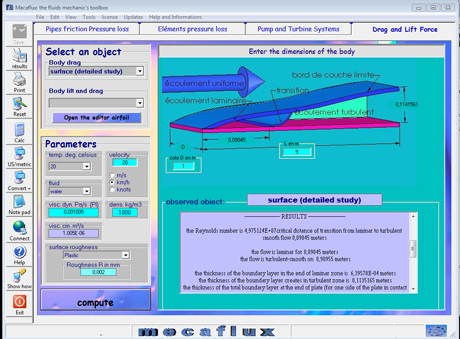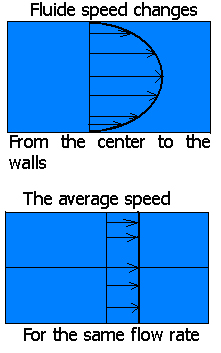The fluid zone, disturbed by surface friction, is the boundary layer, beyond the thickness of the boundary layer, it is considered that the fluid is not disturbed by the effect of friction surface.
The fluid in the boundary layer is disturbed and therefore slows down compared to fluid situated outside of the boundary layer..

boundary layer detail in mecaflux
In the ducts can be seen a maximum speed in the center of the fluid conduit and a speed decreasing to zero in intimate contact with the surface. To facilitate the calculation and manipulation of data an average speed is used.

Surface friction in the pipes are covered in the major head loss calculations
In naval hydrodynamics, the friction surface is called the viscous resistance, due to its dependence on the fluid viscosity parameter. in aerodynamics or hydrodynamics, The frictional resistance or viscous resistance constitutes only a part of the drag resistance.
The surface roughness is a determining factor for the strength of surface friction.With Mecaflux standard
In the interface drag and lift, choose flat plate for a detailed study of the boundary layer and surface friction.
